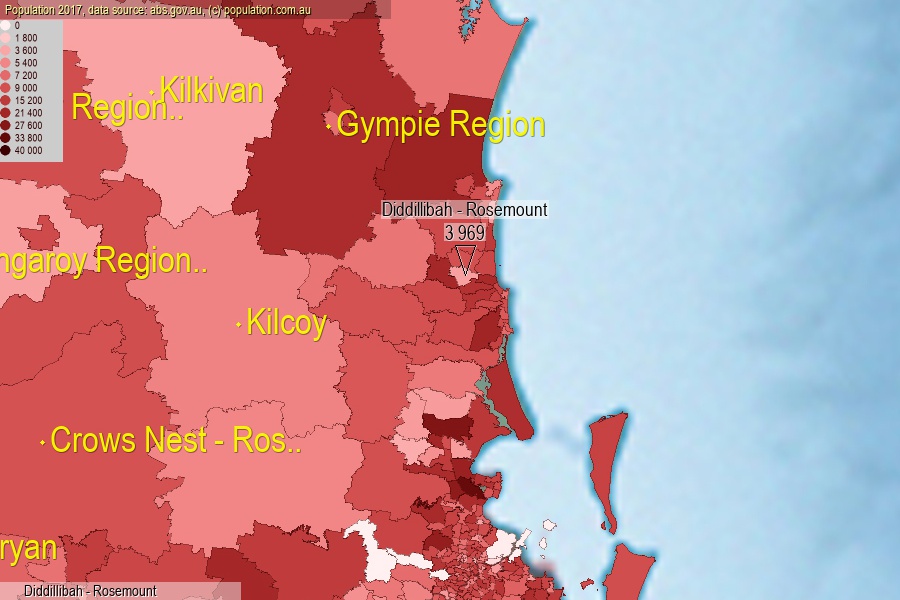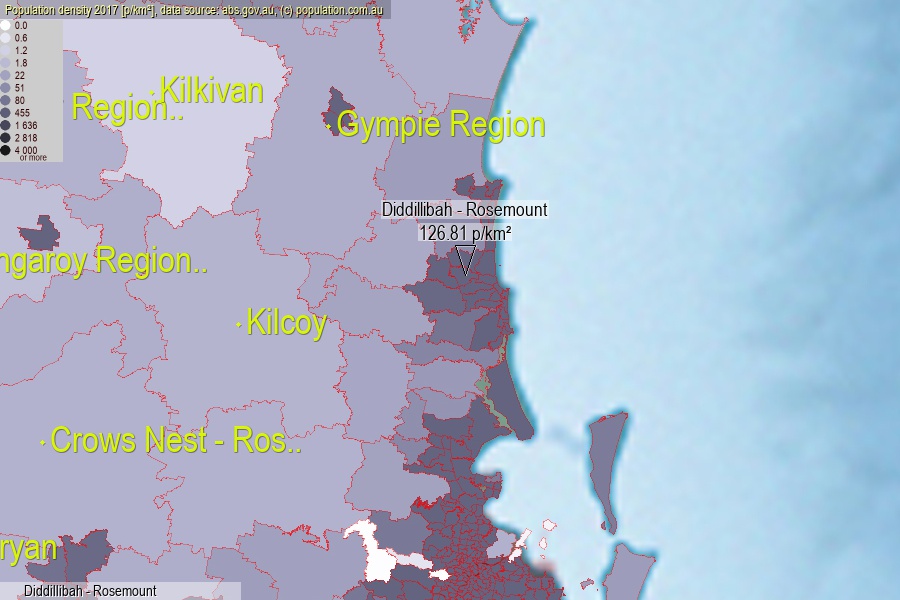 population.com.au
population.com.auLast official estimated population of Diddillibah - Rosemount (as Statistical Area Level 2) was 3 969 people (on 2017-06-30)[2]. This was 0.02% of total Australian population and 0.08% of QLD population. Area of Diddillibah - Rosemount is 31.30 km², in this year population density was 126.81 p/km² . If population growth rate would be same as in period 2016-2017 (+2.4%/yr), Diddillibah - Rosemount population in 2025 would be 4 798. [0]



Click to enlarge. Diddillibah - Rosemount is located in the center of the images.
Population [people], population density [p./km²] and population change [%/year] [2]
View borders » (new window) [4]
[2001-2002] +2.87 %/Yr.
[2002-2003] +2.44 %/Yr.
[2003-2004] +1.35 %/Yr.
[2004-2005] +0.86 %/Yr.
[2005-2006] +1.47 %/Yr.
[2006-2007] +0.21 %/Yr.
[2007-2008] +1.11 %/Yr.
[2008-2009] +1.82 %/Yr.
[2009-2010] +0.56 %/Yr.
[2010-2011] +0.26 %/Yr.
[2011-2012] +1.71 %/Yr.
[2012-2013] +3.54 %/Yr.
[2013-2014] +2.87 %/Yr.
[2014-2015] +2.22 %/Yr.
[2015-2016] +1.55 %/Yr.
[2016-2017] +2.40 %/Yr.
[0] Calculated with linear interpolation from officially estimated population
[1] Read more about SA2 and Australian Statistical Geography Standard (ASGS) on abs.gov.au
[2] Population data from Australian Bureau of Statistics (Population and density: 2017; change: 2016-2017)
[3] Digital Boundaries: Australian Statistical Geography Standard (ASGS) 2016.
[4] Border coordinates are simplifyed using Ramer-Douglas-Peucker algorithm.